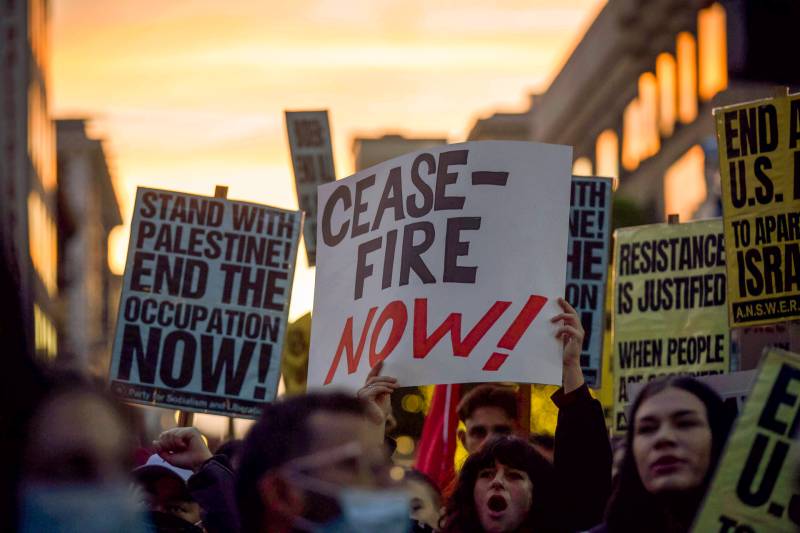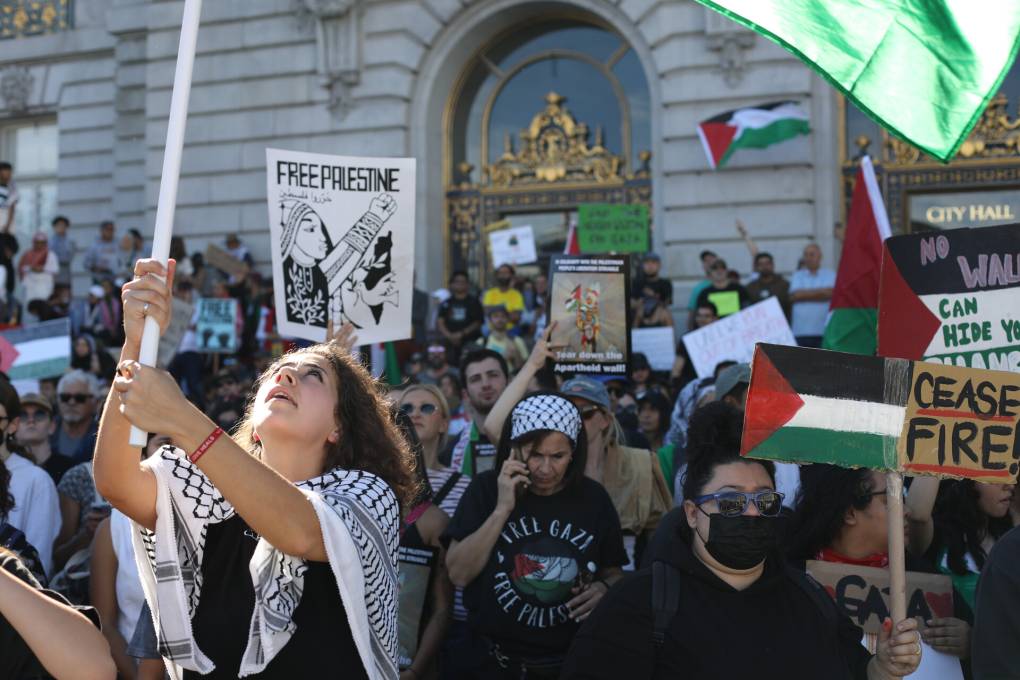Cities across the country are seeing passionate, charged debate among residents — both in support of and against a cease-fire resolution passing in their local government. Places like Long Beach, Seattle (in a second attempt) and Detroit have passed a cease-fire resolution — whereas municipalities like Baltimore and Burlington voted against their resolutions. (You can see a map tracking such resolutions around the country, created by the pro-cease-fire activist group Solidarity Is.)
But how does a city resolution like this get passed — or not? And what does such a resolution actually do?
What is a cease-fire resolution?
Resolutions differ from ordinances — or laws — passed by a city government. They’re an opportunity for a city to state a position, expressing approval or disapproval. Resolutions usually take effect immediately upon adoption and are often symbolic.
In San Francisco, resolutions are often written by the sponsoring supervisor’s staff or by the supervisor and then looked over by the city attorney. In some cases, it can be submitted by the public to a supervisor, who then meets with the group to review the resolution.
When a resolution is introduced in San Francisco, it must go before a board committee to be voted on before it passes to the full board of supervisors. In the case of the Gaza cease-fire resolution, it went before the rules committee on Monday.
Requirements to pass resolutions are mostly the same — they require a majority of the city council to vote yes. In San Francisco, six out of the eleven supervisors would need to vote yes to pass a resolution. The resolution is then handed to Mayor London Breed, who has ten days to sign it, return it unsigned, or veto it.
What’s the impact of passing a resolution like this?
Passing a resolution is a way for the city to make an “unambiguous, moral stand,” said Jess Ghannam, professor of psychiatry at the University of California San Francisco and a proponent of the resolution. Ghannam has worked in Gaza for over two decades, specifically focusing on the traumatic effects of war and displacement on women and children.
“The concept of a cease-fire really has to do with saving and protecting a vulnerable civilian population [in Gaza], which has no ability to protect itself, no ability to flee and no ability to secure any kind of safety,” Ghannam said.
In light of the Biden administration bypassing Congress to continue providing financial support to the Israeli military, Ghannam said passing the resolution is a form of civic engagement — one that can go beyond local impact and contribute to national consensus.
“When we pass these resolutions … we say no to this country promoting genocide, and promoting the death of innocent civilians in this case,” Ghannam said.
Ghannam is part of a group of health care workers who have been leading the call for a cease-fire resolution in San Francisco, and he said they have been particularly incensed by the targeting of hospitals in Gaza by Israel and by the Palestinian people deprived of medical attention.
A San Francisco city resolution would, Ghannam said, also support the city’s Palestinian American community, of which he is a part.
“If you believe that the board of supervisors and city government should represent all of its community members, there’s been a direct impact on local San Francisco communities of the war in Palestine, in Gaza. It’s affecting families here,” he said. “It’s causing them emotional distress.”
The war is also bringing those families “significant distress in terms of the Islamophobic and anti-Arab, anti-Palestinian rhetoric that’s going on,” he said.
Ghannam said that residents also have a particular stake in such resolutions because some tech companies in the Bay Area are involved with the Israeli Defense Force. For example, Project Nimbus — a contract between Google, Amazon, and the Israeli government and military — has already garnered pushback from the company’s employees.
“I think residents in San Francisco, in the Bay Area, would want to know that they are supporting tech companies — maybe even investing in tech companies — that are actively engaged in killing civilians,” Ghannam said. “That just needs to be called out and needs to be challenged and needs to be known.”


